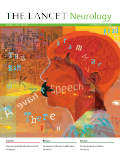
Current Neurology and Neuroscience Reports
Scope & Guideline
Fostering Interdisciplinary Dialogue in Neurology
Introduction
Aims and Scopes
- Clinical Neurology:
The journal covers a wide range of clinical aspects of neurology, including diagnosis, management, and treatment of neurological disorders such as multiple sclerosis, migraine, epilepsy, and neuroinflammatory diseases. - Neuroscience Research:
It features studies that delve into the underlying mechanisms of neurological conditions, utilizing advanced techniques such as neuroimaging, molecular profiling, and genetic analysis to understand disease pathophysiology. - Innovative Therapies:
Current Neurology and Neuroscience Reports highlights innovative therapeutic approaches, including novel drug therapies, surgical interventions, and non-pharmacological treatments, focusing on personalized medicine and patient-centered care. - Neurocritical Care:
The journal addresses critical care issues in neurology, emphasizing the management of acute neurological conditions and the development of protocols to improve patient outcomes in neurocritical settings. - Public Health and Epidemiology:
It also examines the epidemiological aspects of neurological diseases, discussing risk factors, health disparities, and the impact of social determinants on neurological health.
Trending and Emerging
- Artificial Intelligence and Machine Learning:
There is a growing body of work exploring the applications of artificial intelligence and machine learning in neurology, particularly in diagnostics, treatment planning, and predictive analytics for neurological diseases. - Neuroinflammation and Neuroimmunology:
Research focusing on neuroinflammation and its role in various neurological disorders is gaining traction, highlighting the importance of the immune system in neurodegenerative diseases and neuroinflammatory conditions. - Patient-Centered and Community-Based Approaches:
Emerging themes emphasize the importance of patient-centered care and community-based interventions, underscoring the need for holistic approaches in managing neurological disorders. - Telemedicine and Digital Health:
The increase in telemedicine and digital health solutions in neurology, particularly highlighted during and after the COVID-19 pandemic, reflects a trend toward innovative care delivery models that enhance accessibility and patient engagement. - Sleep Disorders and Their Impact on Neurological Health:
Research examining the interplay between sleep disorders and neurological conditions is on the rise, indicating an increasing recognition of sleep's critical role in brain health and disease management.
Declining or Waning
- Traditional Pharmacological Approaches:
There appears to be a decreasing emphasis on traditional pharmacological treatments for neurological disorders, as the field increasingly turns towards novel therapies and integrative approaches that consider patient-centered care. - General Reviews on Neurological Disorders:
The frequency of broad, non-specific review articles on established neurological disorders is declining, suggesting a shift towards more specialized, in-depth analyses of emerging topics and innovative treatments. - Basic Neuroscience Research:
Research solely focused on basic neuroscience without direct clinical implications has become less prominent, indicating a potential trend towards studies that bridge basic science with clinical application.
Similar Journals

LANCET NEUROLOGY
Exploring Breakthroughs in Neurological DisordersThe Lancet Neurology is a premier academic journal published by Elsevier Science Inc, specializing in the field of neurology. With a robust impact factor that signifies its authoritative presence, it consistently ranks in the Q1 category for clinical neurology according to the 2023 standards, positioning itself as the leading journal in its domain, ranking #1 out of 400 in Scopus' neurology rankings and placing in the 99th percentile. Since its establishment in 2002, it has provided a vital platform for disseminating innovative research and clinical advances related to neurological disorders. The journal’s precise focus includes cutting-edge studies on neurodegenerative diseases, stroke, epilepsy, and neuroimaging, which are essential for advancing clinical practice and improving patient outcomes. While it does not offer open access, readers can find high-impact research published monthly, making it indispensable for practitioners, researchers, and students eager to stay at the forefront of neurological science.

EUROPEAN NEUROLOGY
Fostering Excellence in Neurology Research and PracticeEuropean Neurology, published by KARGER, is a distinguished journal in the field of neurology, catering to both clinical and neuroscience specialties. Since its inception in 1897 and continuing through 2024, the journal has been a vital platform for disseminating significant research findings and insights in neurology. With an ISSN of 0014-3022 and E-ISSN of 1421-9913, it ranks in the Q3 quartile in both clinical neurology and general neurology categories, reflecting its commitment to scholarly excellence while holding the 175th rank in clinical medicine and the 93rd in neuroscience, according to Scopus metrics. European Neurology facilitates a deeper understanding of neurological disorders and treatments, appealing to a diverse readership that includes researchers, clinicians, and students alike. Despite not currently offering open access, the journal’s rigorous peer-review process ensures that only high-quality research reaches its audience, making it an essential resource for those looking to stay informed in the rapidly evolving field of neurology.

Future Neurology
Empowering the future of neurological health.Future Neurology, published by Future Medicine Ltd, is an emerging peer-reviewed journal dedicated to the rapidly evolving field of neurology, with a keen focus on both clinical and translational research. Since its inception in 2007, the journal has provided a unique platform for sharing innovative findings and fostering collaboration among neurologists, neuroscientists, and healthcare professionals. Although currently categorized in the Q4 quartile for both Neurology and Clinical Neurology, Future Neurology strives to improve its impact factor by publishing high-quality research and reviews that address pressing issues in neurological health. With its commitment to disseminating knowledge, the journal serves as an essential resource for professionals and researchers seeking to stay informed about advancements in neurological science. It is particularly valuable for those looking to contribute to and engage with the latest developments in neurotherapeutics, diagnostics, and patient care strategies. The journal is indexed in major databases and is available in print and online formats, ensuring wider accessibility to its content for all stakeholders in the field.

Basic and Clinical Neuroscience
Bridging cellular and clinical knowledge for a healthier future.Basic and Clinical Neuroscience, published by Iran University of Medical Sciences, is a distinguished open-access journal that has been operational since 2009, providing a platform for the dissemination of significant research in the fields of neuroscience and neurology. With the ISSN 2008-126X and E-ISSN 2228-7442, this journal serves as a vital resource for researchers, clinicians, and students by facilitating access to the latest findings and advancements in cellular and molecular neuroscience as well as clinical neurology. Although currently rated in Q4 for Cellular and Molecular Neuroscience and Q3 for Clinical Neurology as of 2023, it aims to enhance its standing through the publication of high-quality, peer-reviewed research. The journal has achieved a Scopus rank placing it in the 38th percentile for Neurology and the 13th percentile for Neuroscience, indicating a growing recognition of its contributions. With its commitment to open access, Basic and Clinical Neuroscience not only contributes to the scientific community in Iran but also strives to connect researchers worldwide, fostering collaborative efforts in tackling complex neurological challenges.

NEUROLOGIA
Shaping the Future of Neurology Through Rigorous ResearchNEUROLOGIA, an esteemed journal published by ELSEVIER ESPANA SLU, stands at the forefront of the field of neurology, with a dedicated focus on innovative research and clinical practice since its inception in 1973. As an Open Access journal since 2017, it champions the dissemination of knowledge, allowing researchers, professionals, and students alike to access cutting-edge findings in neurology without barriers. With an impressive Scopus rank of #115 in the clinical neurology category, placing it in the 71st percentile, NEUROLOGIA is categorized as Q3 in both general medicine and clinical neurology, reflecting its impact and relevance in a rapidly evolving field. Based in Barcelona, Spain, the journal's commitment to advancing understanding of neurological conditions is underscored by its rigorous peer-review process and engagement with a global audience. As it continues to publish vital research that shapes clinical practices and informs policy, NEUROLOGIA remains an integral resource for those striving to improve outcomes in neurology.

JOURNAL OF CLINICAL NEUROSCIENCE
Exploring New Horizons in Clinical NeuroscienceJOURNAL OF CLINICAL NEUROSCIENCE is an esteemed publication dedicated to advancing the field of neurology and related medical disciplines. Published by ELSEVIER SCI LTD, this journal serves as a vital resource for researchers, clinicians, and educators, providing a platform for the dissemination of high-quality research findings since its inception in 1994. With a noteworthy impact factor and ranked within the Q2 and Q3 categories across various medical specialties, including neurology and surgery, the journal positions itself at the forefront of clinical neuroscience. Although it operates under a traditional subscription model, the journal’s commitment to publishing rigorous scientific work ensures that it remains an integral reference for anyone involved in the diagnosis, treatment, and understanding of neurological disorders. Readers can access a diverse array of articles that not only highlight current research trends but also foster the exchange of innovative ideas in clinical practice.

Neurology Research International
Unlocking Innovations in Clinical NeuroscienceNeurology Research International, published by HINDAWI LTD, is an esteemed open access journal that has been serving the neurology community since 2010. With its ISSN 2090-1852 and E-ISSN 2090-1860, this journal aims to foster knowledge dissemination and facilitate dialogue surrounding key issues in neurology and clinical neuroscience, making it a vital resource for researchers, clinicians, and students alike. It operates from the United States, with its administrative hub located in London, England. As of 2023, the journal has been positioned in the Q3 category for both neurology and clinical neurology, reflecting its commitment to advancing research within these critical fields. With a current Scopus rank of #216/400 in clinical neurology and a #113/192 in neuroscience, and a converged publication timeline from 2010 to 2024, Neurology Research International is dedicated to promoting high-quality research that addresses contemporary challenges and innovations in neurological science. By offering open access since its inception, it ensures that cutting-edge research is freely available, aligning with the global push towards accessible scientific communication.

RESTORATIVE NEUROLOGY AND NEUROSCIENCE
Advancing Neural Restoration: Pioneering Research in Neurology and NeuroscienceRESTORATIVE NEUROLOGY AND NEUROSCIENCE, published by IOS PRESS, is a premier journal dedicated to advancing the fields of neurology and neuroscience. Since its inception in 1989, this journal has played a crucial role in disseminating cutting-edge research findings and innovative therapeutic approaches that aim to restore neurological function and improve patient outcomes. With a focus on developmental neuroscience and clinical neurology, the journal holds a 2023 Scopus ranking of #129 out of 400 in clinical neurology, and #15 out of 37 in developmental neuroscience, reflecting its significant influence in these domains. Although it operates on a non-open access model, RESTORATIVE NEUROLOGY AND NEUROSCIENCE offers valuable insights for researchers, healthcare professionals, and students seeking to deepen their understanding of neural restoration mechanisms and therapeutic strategies. Located in Amsterdam, Netherlands, the journal continues to foster scholarly dialogue and innovation, contributing to the global advancement of neuroscience and neurology.

Journal of Central Nervous System Disease
Pioneering research for a healthier brain.Welcome to the Journal of Central Nervous System Disease, a premier Open Access publication dedicated to advancing the understanding of neurological disorders and their underlying mechanisms. Published by SAGE Publications Ltd, this esteemed journal has been serving the scientific community since 2009 and is committed to disseminating high-quality research that spans from clinical neurology to cellular and molecular neuroscience. With an impressive impact factor, the journal ranks within the top quartiles—Q2 in both Neurology and Clinical Neurology, and Q3 in Cellular and Molecular Neuroscience as of 2023. The journal's indexing in Scopus reflects its significant contribution to the field, being ranked #83 out of 400 in clinical neurology and #38 out of 97 in cellular and molecular neuroscience. This essential resource, based in the United States, is crucial for researchers, clinicians, and students looking to stay at the forefront of neurological science. By providing Open Access options, we ensure that groundbreaking research is readily available to a global audience, fostering collaboration and innovation in the study of central nervous system diseases.

JOURNAL OF NEUROLOGY NEUROSURGERY AND PSYCHIATRY
Leading the charge in neurological and psychiatric innovation.JOURNAL OF NEUROLOGY NEUROSURGERY AND PSYCHIATRY, published by the esteemed BMJ PUBLISHING GROUP, is a leading journal that covers pivotal research in the fields of neurology, neurosurgery, and psychiatry. With an impressive impact factor and consistently recognized as a Q1 journal in its respective categories—including Clinical Neurology, Psychiatry and Mental Health, and Surgery—this publication ranks in the top percentiles on Scopus, showcasing its influence in the medical community. Since its inception in 1920, the journal has been committed to delivering high-quality, peer-reviewed content to researchers, clinicians, and students alike, maintaining an exceptional reputation attributed to its rigorous selection process and the depth of its contributions. Access to the journal's articles fosters a comprehensive understanding of progressive research and clinical practices, solidifying its significance for professionals aiming to navigate the complexities of neurological and psychiatric disorders. As a vital resource based in the United Kingdom, the journal continues to propel innovation and knowledge sharing in the ever-evolving landscape of neurohealth.